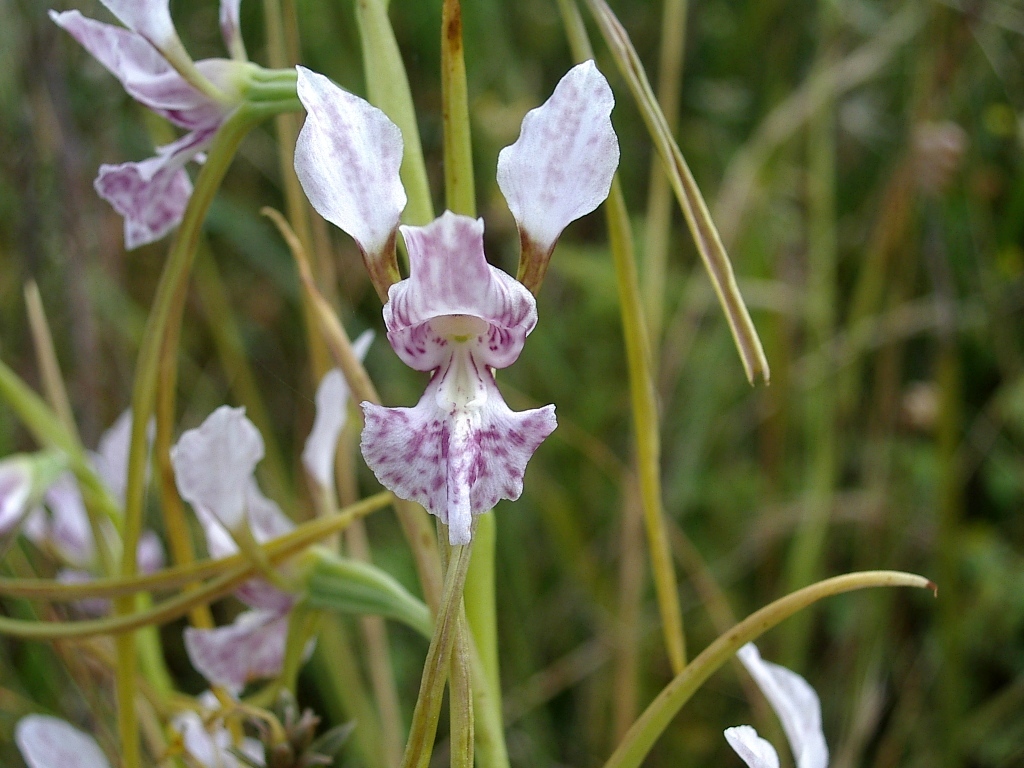Diuris dendrobioides
Fitzg.Flowering plant usually 20–40 cm tall, slender to moderately stout. Leaves 1 or 2, linear, channelled, 10–25 cm long. Flowers 1–9, erect, pale lilac to mauve, often with darker spots and suffusions, sometimes fragrant; pedicel (excluding ovary) 2–5 cm long, mostly enclosed within bract; dorsal sepal erect, broadly ovate, 15–20 mm long; lateral sepals deflexed, usually parallel, narrow-linear, greatly exceeding petals, 50–90 mm long; petals obliquely erect or recurved, ovate to elliptic, tapering to base, 12–20 mm long. Labellum 3-lobed from base, 10–13 mm long; lateral lobes erect, about half as long as mid-lobe, oblong, margins entire; mid-lobe keeled, long-clawed, broadly fan-shaped, margins irregular, with 2 longitudinal yellow ridges from the base ending in tooth-like processes around midway along lamina. Column narrowly winged. Flowers Nov.-Dec.
VRiv, GipP, NIS. Also NSW, ACT. Extremely rare in Victoria where known only from grasslands in the vicinity of Wodonga.
A taxon similar to Diuris dendrobioides from Gippsland. (see D. sp. aff. dendrobioides (Bairnsdale)) has generally shorter scapes, slightly shorter lateral sepals and flowers earlier.
A possible natural hybrid between Diuris punctata and D. dendrobioides has been recorded for Victoria.
 Spinning
Spinning

